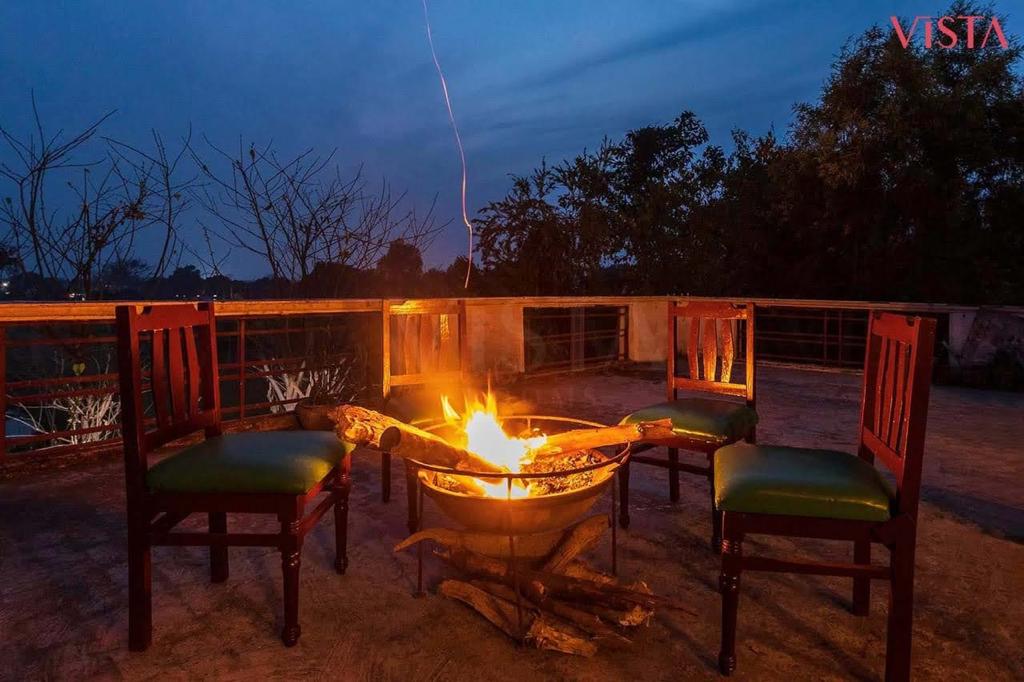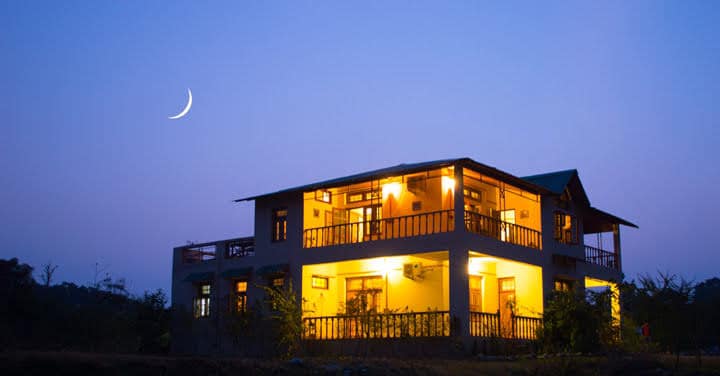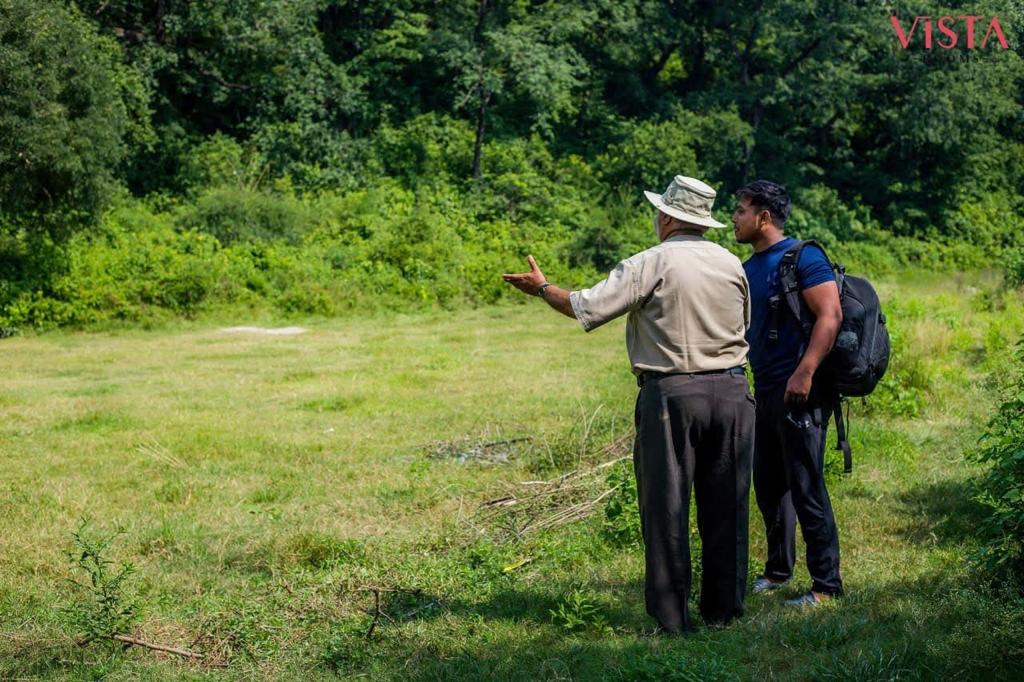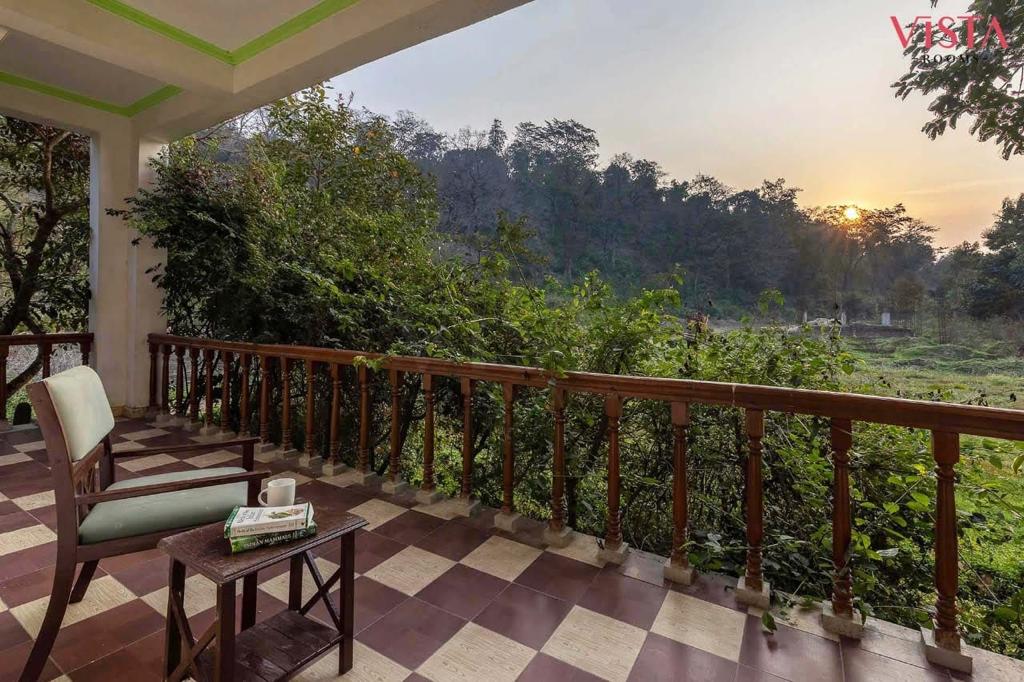Nestled within the heart of the Corbett Tiger Reserve lies a unique retreat that offers more than just accommodation; it promises an immersion into the wilderness unlike any other. At ‘The Ranger’s Lodge’, the phrase ‘living in the jungle’ takes on a whole new significance.
Since its inception in 2013, this homestay, under the stewardship of naturalist Imran Khan, has captivated adventurers and nature enthusiasts alike. The resolute piece of paradise draws wanderers from across the world who are intrigued by how tourism and wildlife can go hand-in-hand in a world where it is a rarity.
“Don’t come here if you are looking for a picnic,” Imran cautions at the outset. “There are no bars, swimming pools, and DJ music. Instead, you are looking at days stretched out in front of you filled with safaris, bird watching, leopard spotting, and, of course, tiger trails.”
As the 58-year-old conservationist preps for his safari tour — which commences at 6.30 am and will go on till 10.30 am — his pride in his creations on the land is evident. Nostalgia is rife.

It was not more than five decades ago when Imran stood on this same precipice with his grandfather for company. As the latter hunted wild boars and deer, Imran recalls his innocent prayers for his grandfather to miss the shot. “I used to hope for the animal’s life to be spared,” he recalls.
The reserve was a frequent haunt for the family who lived in Rampur, 75 km away. Summer vacations in nature meant Imran’s best friends were the tigers, chital, sambhar deer, leopards, and jackals spotted here. Each had a name, and Imran was fond of every one of them.
Today, Imran’s love for the wild has only deepened, and The Ranger’s Lodge is an embodiment of it.

Championing wildlife conservation
As one wanders through Imran’s perfectly manicured garden, the bloom of colours is a beautiful eruption against the muted backdrop of the reserve. “I grow my own produce,” he declares proudly, as his wife Kahkashan lists the dishes these find their way into:
“Lamb stew, aloo mattar lamb kheema (a version of lamb curry made with peas and potatoes), bhatt ki chudkani (a soybean gravy), dubke (a Kumaoni dish made with pulses and lentils), rajma chawal, and mooli palak bhujia (a snack made with radish and spinach),” she goes on.
Scenery and ambience marry together in a fascinating blend at the lodge. The colours are a welcome interruption to the saturated blues and greens of the landscape against which they rest. Their hues are almost symbolic of Imran’s love for nature, a passion that he harboured for three decades when he first set foot on the land.

A graduation degree in chemistry was followed by training at the WII (Wildlife Institute of India) in Dehradun — the same place where IFS officers are trained — where Imran partook in numerous research projects in the domain of tiger conservation, grassland conservation, and maintaining wildlife databases.
In 1994, armed with knowledge, Imran was intent on creating a model for wildlife tourism, a first of its kind in India.
Elaborating on his ideology, Imran says, “In my opinion, the only way to save the tiger was to link it with economic gain. People needed to understand the value of a biodiverse forest, the urgency to save tigers, and why their natural habitat was so crucial.”
Wildlife tourism was the solution that would tie these loose ends together. While setting up The Ranger’s Lodge, Imran brought to the table his expertise in wildlife and conservation, areas he had gained in-depth knowledge in owing to his term of service as a member of the State Wildlife Advisory Board of Uttarakhand, Assam, and Arunachal Pradesh, along with serving many Government committees on environment conservation and wildlife.
“I started the concept of the full-day safari,” he smiles. “The idea was always to curate something different from the conventional holiday experience.”

But that being said, the mushrooming of numerous hotels and resorts on the fringes of the tiger reserve has hampered the vision Imran had for the sanctuary.
As he explains, “Today, the capacity of resorts in Corbett is around 15,000 people. But, the carrying capacity of the park is 2,000 people a day. What are the remaining 13,000 people doing? Well, that’s where the loud music, partying, etc comes from. While this is great for the economy of the country, it isn’t my idea of wildlife tourism.”
Imran emphasises that tiger conservation isn’t a new concept but something rooted in our culture. “The Mahabharata too asks us not to cut forests that have tigers in them. It asks us not to banish tigers from the forest or else the forest will perish. Eventually, it says humanity will perish if tigers and forests cease to exist.”
A one-stop storehouse of knowledge

Travellers looking for some respite from the buzz of city life hurtle to the calm of the lodge where Imran treats them to anecdotes.
Sharing one of these, he says, “I remember one time when I was taking my guests — four Britishers — on a safari into the reserve. When we stopped, we spotted a monkey atop a tree that was continuously giving an alarm call while looking towards our left. But we couldn’t spot anything.”
He goes on, “I was sure the monkey had seen something because it wouldn’t sound an alarm otherwise. In the next few seconds, things were a blur. A tigress jumped across the bonnet of the jeep as we realised the monkey had spotted her cubs which were hidden to the left. That was a memory.”
Imran has many such stories to share. As Palash Bhattacharya, who stayed at the lodge for three days recounts, his favourite part of the trip was “learning about the forest from a true naturalist”. “We made unforgettable moments,” he shares adding that it was an enriching experience to watch the tigers, pythons, elephants and more wildlife in their habitats.

Imran has trained over a thousand youth from Ramnagar and the surrounding villages in nature interpretation, tiger trekking, and bird watching. “The drivers and the guides are the true representatives of the forest department. So it is only fitting that when they take outsiders into the forest, they should know how to behave, and how to inculcate an interest towards conservation in these guests,” he says, adding that he trains them in these facets.
He also encourages these youth to shed light on vegetation, the importance of sal forests, the importance of termites in sal forests, the life-cycle of honeybees and butterflies, and how they are all related to humanity in the long run.
Did you know there are nine ways of spotting a tiger in the forest? I did not.
“Well, there are,” says Imran adding that this is included in the training. “In addition to this, I also train them in tracking a tiger down, the message they must carry about the forest, and saving the tiger.”

It is on these forest trips that people can truly experience the magic of nature, and Imran’s lodge too provides you with that.
Wake up to the chirp of birds at this immaculate homestay priced at Rs 7000 a night and made with local stone and wood and set on a 1,000 sq m expanse. With three bedrooms that he leases out to guests, Imran has seen to it that the homestay is a lesson in sustainability. Rainwater harvesting, waste segregation, recycling of wastewater, and solid waste management are a few of the successes.
The rustic vintage vibe of the homestay is an antidote to novelty, something that Imran prides himself on. He shares that often people spot a lone tiger roaming around. Other times it is birdsong that will keep you company.
“This is the space I always wanted to create,” he explains. “A space where wildlife and humans can co-exist.”
Edited by Pranita Bhat
No comments:
Post a Comment